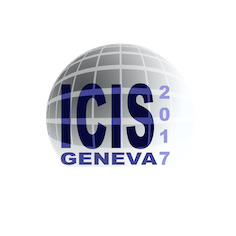Speaker
Description
Each beam line of the ITER Neutral Beam Injection (NBI) system is designed to deliver 16.5 MW into the plasma, thus providing heating and current drive by means of 40 A of negative ion current accelerated up to 1 MeV for 1 hour. Strict requirements are foreseen for these negative hydrogen ion sources: high extracted current density (33 mA/cm$^2$ for H$^−$ and 28.6 mA/cm$^2$ for D$^−$), very small beam core divergence ($<$ 7 mrad) and a beam uniformity of better than 90%, for a large beam extracted from 1280 apertures. The ion source filling pressure has been set $<$ 0.3 Pa, in order to keep the stripping losses in the accelerator to a tolerable level, and the ratio of co-extracted electrons to ions should be less than one. These high-demanding requirements are necessary to minimize the overall beam losses (and therefore to maximize the efficiency), and minimize the heat loads on the components along the beam line.
The ELISE test facility operating at IPP is an intermediate step in the design and assessment of the NBI system for ITER, providing the earliest experiences on the operation and performance of a large RF-driven negative hydrogen ion source, with half the size of the ITER source (extraction system with 640 apertures for a beam size of almost 1 m × 1 m). In ELISE, both hydrogen and deuterium RF-induced plasmas at 0.3 Pa can be run for up to 1 hour, extracting a negative ion beam for 10 s every 150 s, due to limitations in the HV power supply; the negative ions can be accelerated up to 60 keV. A beam divergence of 17 mrad can be achieved, limited only by the HV and the accelerator system. At ELISE, it is possible to have an insight into the beam physics of the large beam by means of several diagnostics with a high spatial resolution. The Beam Emission Spectroscopy (BES) diagnostic can provide information on the beam uniformity as well as on the divergence along a vertical (resolution of 5 cm) and a horizontal profile; the Infra-Red (IR) data evaluation of the beam hitting the diagnostic calorimeter provide a 2D map (resolution of 4 cm) of the beam power density.
Three main topics will be reported: studies on the vertical beam homogeneity (in terms of both intensity and divergence) in correlation with source operational settings and performances; the investigation of the presence of a beam broad component (i.e. a small fraction of the accelerated ions with a significantly higher divergence than the majority of the beam); the investigation of the stripping losses inside the extraction system.




